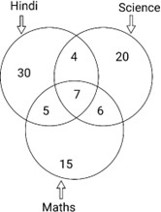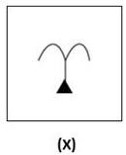Select the triad in which the numbers are related to each other in the same way as the numbers in the following triads.
4-5-41
2-3-13
(NOTE : Operations should be performed on the whole numbers, without breaking down the numbers into its constituent digits. E.g. 13 – Operations on 13 such as adding /deleting /multiplying etc., to 13 can be performed. Breaking down 13 into 1 and 3 and then performing mathematical operations on 1 and 3 is not allowed.)
Identify the figure from among the given options which when put in place of the question mark (?) will logically complete the series.
Three of the following four options are alike in a certain way and thus form a group. Which is the one that does NOT belong to that group?
(NOTE: Operations should be performed on the whole numbers, without breaking down the numbers into its constituent digits. E.g. 13 – Operations on 13 such as adding/subtracting/multiplying etc. to 13 can be performed. Breaking down 13 into 1 and 3 and then performing mathematical operations on 1 and 3 is not allowed.)
The sequence of folding a piece of paper and the manner in which the folded paper has been cut is shown in the following figures. How would this paper look when unfolded?
Study the given diagram carefully and answer the question that follows. The numbers in different sections indicate the number of students who like particular subjects.
How many students like Hindi and Science both, but NOT Maths?
Select the option figure in which the given figure (X) is embedded (rotation is NOT allowed).